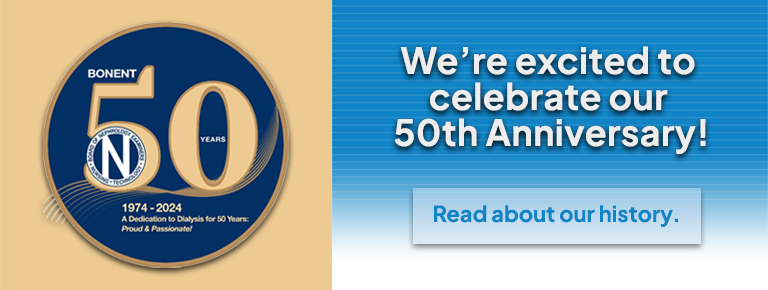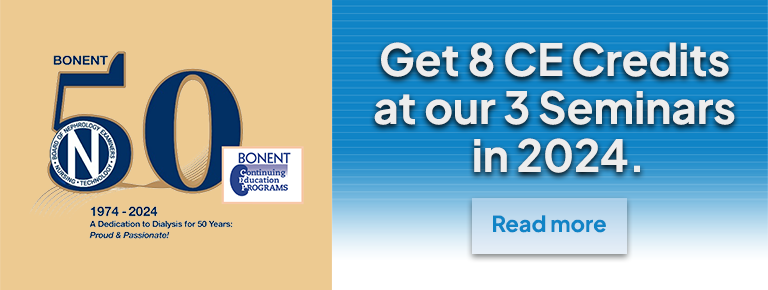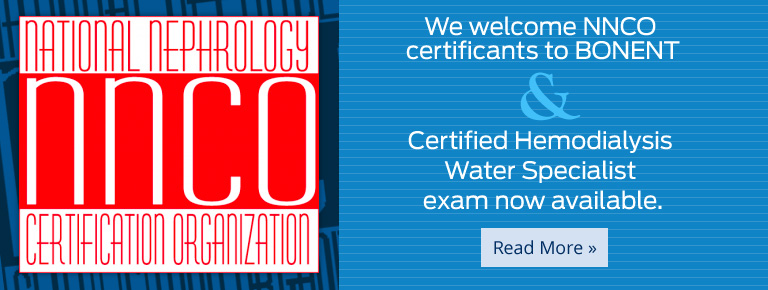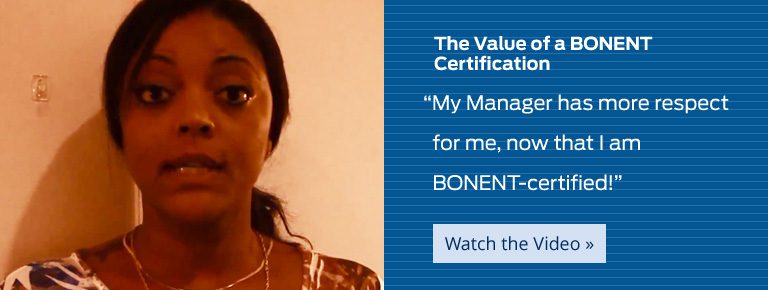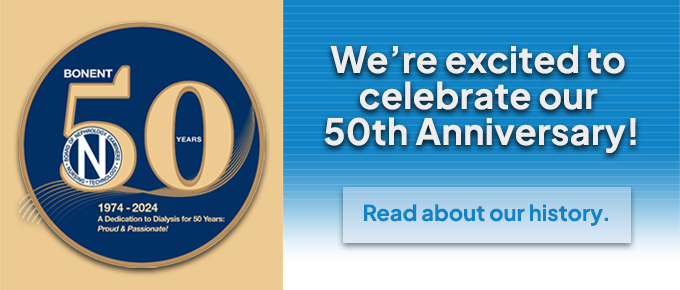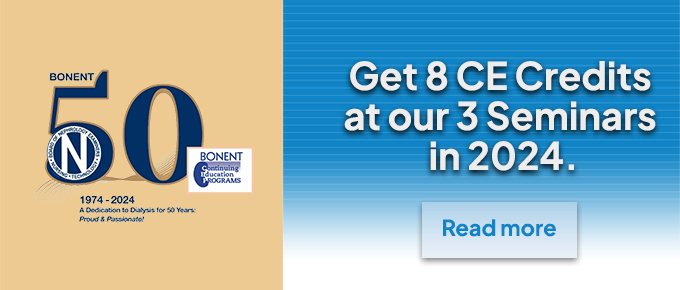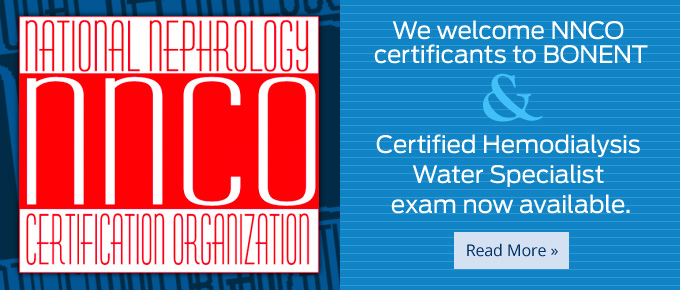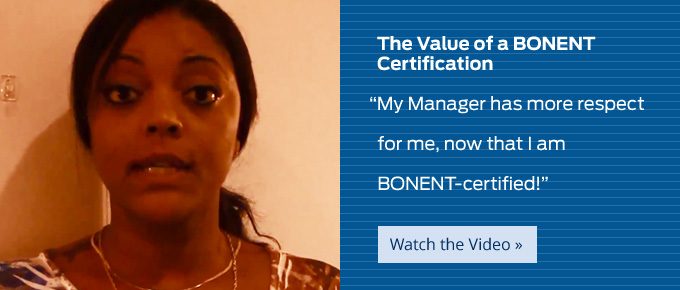The Early Years: Why We Started
In the early 1970’s, two professional organizations were competing for the membership of nurses and technicians working in the nephrology field, principally in the areas of dialysis and transplantation. These organizations were: The American Association of Nephrology Nurses and Technicians (AANNT) and the American Society of Extracorporeal Technologists (AMSECT).
Each group was concerned with the professional credentials of personnel providing direct patient care. AANNT had about 1,500 members, of which 85% were nurses and 15% were technicians. AANNT was an educational organization, its major activities being an annual meeting, five regional meetings, publishing the AANNT Journal and other related activities.
Previously, a committee had been established to explore the feasibility of an AANNT certification examination. The committee actively investigated the models of other professional groups, the availability of funding, and sought the advice of the American Medical Association, the American Nurses Association, the American Hospital Association, the National Kidney Foundation, and the American Society of Artificial Internal Organs.
AMSECT had approximately 1,000 members. The cardiac perfusionists dominated the membership; dialysis technicians accounted for about 15% and a very small percentage was comprised of nephrology nurses. Credentialing was of critical importance to the AMSECT membership since most of the technicians, either in perfusion or dialysis, had been trained on the job and had no other formal credentials.
Recognizing this urgent need, AMSECT prepared its own certification examination written by a core of clinicians and educators pooled from the AMSECT dialysis members. During the summer of 1973, AMSECT began to administer its certification examination. For some dialysis nurses and technicians, this examination presented a new dimension for them, as no other form of credentialing previously existed.
For others, the test was simply expensive and the direct benefit to the members was not immediately realized. However, AMSECT continued to test between 1973 and 1976, indicating that the candidates felt they would derive some benefit.
AANNT reviewed the AMSECT situation and did not have an alternative to offer its membership. This was becoming an increasingly important matter in that AANNT had many more dialysis technicians in its membership than AMSECT. AANNT and AMSECT began to meet jointly to discuss what could be done to solve this credentialing problem.
BONENT: Born in April 1974
After weighing the many aspects of each organization, an independent testing body was established. This was the beginning of the Board of Nephrology Examiners (Nursing and Technology) BONENT in April, 1974.
From that period to the present, BONENT has been in an evolutionary state. The initial process was concerned with all normal procedures of formulating an organization as well as accomplishing the principle reason for which the organization was established: viable credentialing.
Testing is a complex and on-going process. Large sums of money are necessary to support this type of an endeavor. Seed money was provided in the form of grants from AANNT and industry representatives. Funds are now generated through exam candidates and membership annual support.
BONENT contracted with a professional examination service to help develop and administer the technologist examination – Certified Hemodialysis Technician (CHT). The core curriculum was defined and candidate requirements developed so that by April, 1976, a pre-test was administered at the AANNT national meeting. In the early years, the examination was offered at AANNT national and regional meetings.
Recertification would also be required every four years.
The CHT Exam Expands Beyond Theory
The hosting method of administration was later introduced so that candidates could take the Paper & Pencil Examination (PPE) throughout the year in their local areas. A major revision of the exam occurred in 1983, which allowed BONENT to focus its testing on the practice of hemodialysis therapy rather than on theory alone.
CHN Starts in 1979
Future plans always included expansion of existing exams to reflect the increasing specialization of both dialysis nurses and technicians. Once the organization felt comfortable with its technologist exam process, it expanded its offerings in 1979 to include a nursing exam and credential – the CHN – Certified Hemodialysis Nurse.
Constant Revisions to Exams
Examination performance is under continuous review and revisions in all examinations are undertaken on a regular basis.
Peritoneal Started in 1989
In 1989, BONENT introduced a certification examination for the peritoneal dialysis specialty by developing the Certified Peritoneal Dialysis Nurse (CPDN) exam.
Office Moves
The BONENT Executive Office has provided exam coordination and member services from Madison WI, then later from Lenexa KS and most recently from the Washington DC area since 2006.
CBT Available in 2008
In an effort to reach as many nephrology professionals as possible, the Board of Directors decided to implement Computer Based Testing (CBT) across the United States and many other countries. All three exams, at that time were made available at all locations. This exam method has now overtaken the PPE as the leader in exam method of choice.
Federal Government 2010 Certification Mandate
The new ESRD Rules & Regulations approved by the U.S. Federal Government’s Centers for Medicare & Medicaid Services (CMS) were published with comments in the Federal Register (4-15-08). The 116-page CMS ESRD Final Rules stipulated that newly-employed patient care technicians must be certified within 18 months of being hired as a dialysis patient care technician.
And for those PCTs employed on or before October 14, 2008, they would need to be certified within 18 months after that date.
This decision would have quite an effect on the improvement to the quality of patient care. It also was a boon to the numbers of PCTs to become certified in the years following this major decision.
2012: Providing CE via Regional Seminars
With the federal mandate above, BONENT established the Continuing Education Programs Committee to oversee the establishment of providing continuing education hours to its certified members. Its first foray in this area was to provide CE via Regional Seminars. The first regional seminar was held in the Mid-West (Chicago, IL) in July 2012, with over 125 attendees. Based on positive feedback from attendees, additional Regional Seminars were added: Southeast, Great Lakes, Western and Northeast. In 2016, BONENT added BioMedical continuing education at the seminars to cater to the new and growing group of certified BioMedical Technicians. As of 2018, BONENT has held 20 Regional Seminars in 6 years!
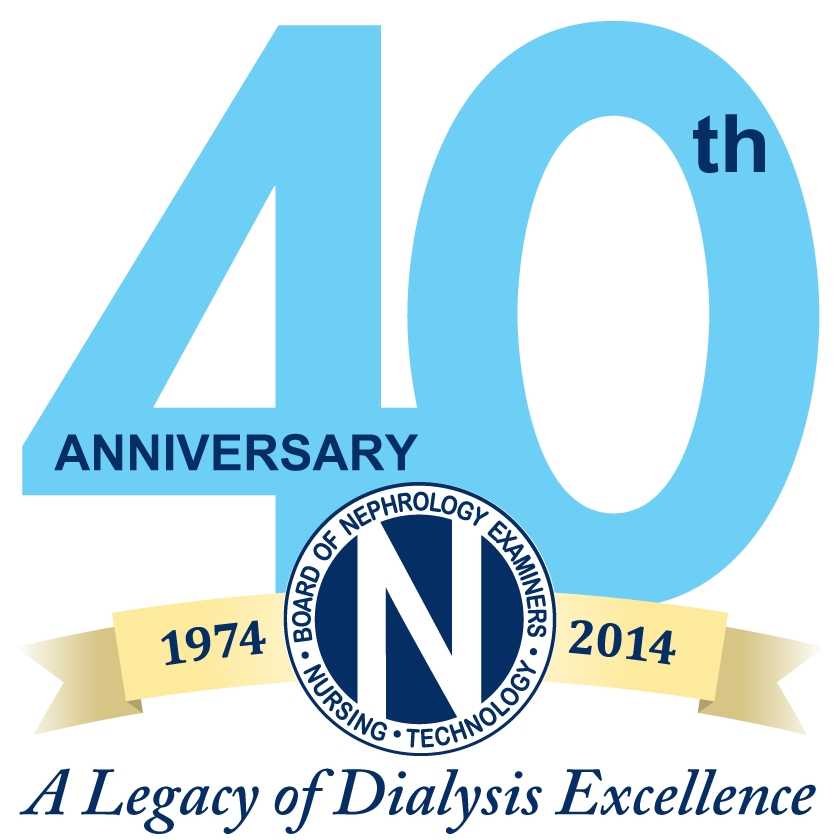
2014: BioMed and CHT Spanish Exams Added
In September 2014, after an extensive development period, BONENT launched Certified Hemodialysis BioMedical Technician (CHBT), a new exam and certification that caters to BioMed professionals. Since then, BONENT has certified BioMedical technicians in 15 states.
Again to expand its market, the CHT exam was translated into Spanish and made available via PPE in the United States in 2015. As of 2017 CHT Spanish is available around the globe via PPE and CBT.
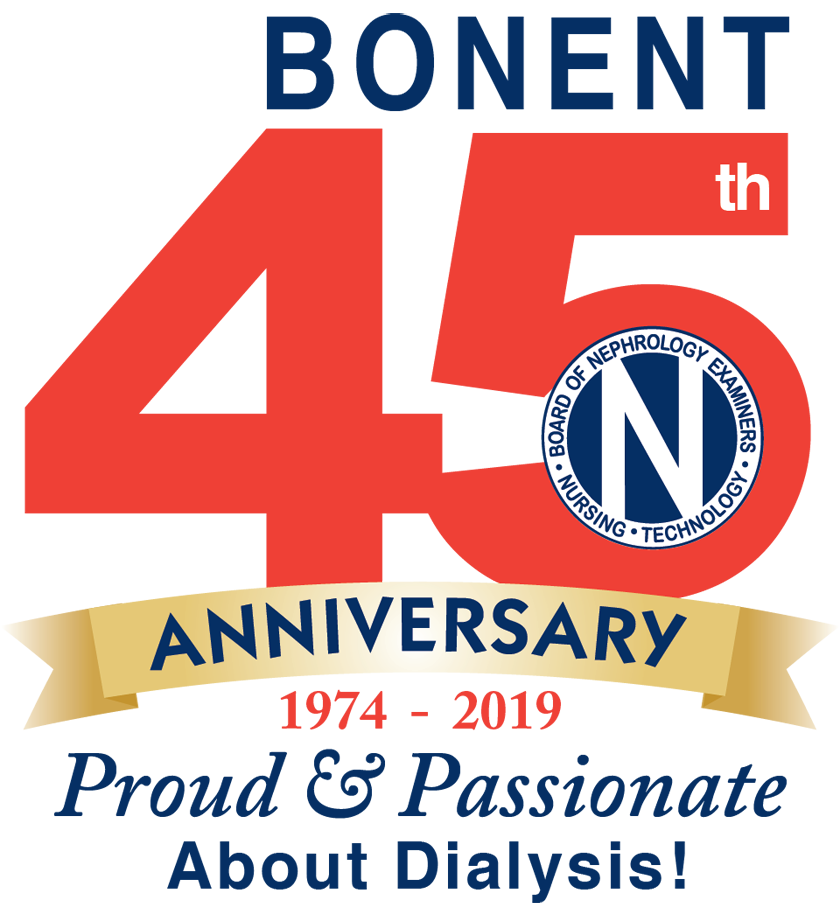
After a year of development, BONENT debuted its newly designed website with a fresh look that makes it easier to navigate. One exciting addition to the website is the new BONENT Store where BONENT members can show their pride by purchasing various items with the BONENT name or logo.
As you can see BONENT not only continues to evolve, seeking to meet the changing needs of viable credentialing in the nephrology field, but it boasts over 7,000 certified members in 13 countries.
Click to see our 45th Anniversary video.
In the fall of 2020, the NNCO Board of Directors announced that, in the best interest of its certificants, it agreed to a partnership with BONENT, effective January 1, 2021. BONENT has a 46-year history of certification for technicians, nurses and more recently with BioMeds. RJ Picciano, BONENT President, said “BONENT has enthusiastically agreed to accept all CCNT, CBNT, and CDWS certificants, as well as providing a path for their recertification to becoming BONENT members.” BONENT added to its four exams by offering the Dialysis Water Specialist (CDWS) certification based on the program set up by NNCO, but the acronym will change to Certified Hemodialysis Water Specialist (CHWS). This addition brings the total exams offered by BONENT to five. Click here for the News Release.
With COVID-19 upon us in 2020, our three Regional Seminars were canceled. To help our members attain Continuing Education credits, we held our first Virtual Seminar in September 2021. It was an instant success with over 300 attendees!

Now with over 8,000 certified members across 11 countries, BONENT embarks on its 50th year, since starting in 1974! We look back at the amazing growth in membership across the United States and globally, 5 exams, including the CHT in Spanish, computerized database, regional seminars, virtual seminars, updated website including My Account pages, Certification Verification, Check Exam Application Status and much more! And look for a new section on our website later in 2024 for Online Continuing Education, where we will provide over 30 single-hour webinars to purchase and view to help you gain CE hours for your recertification.







